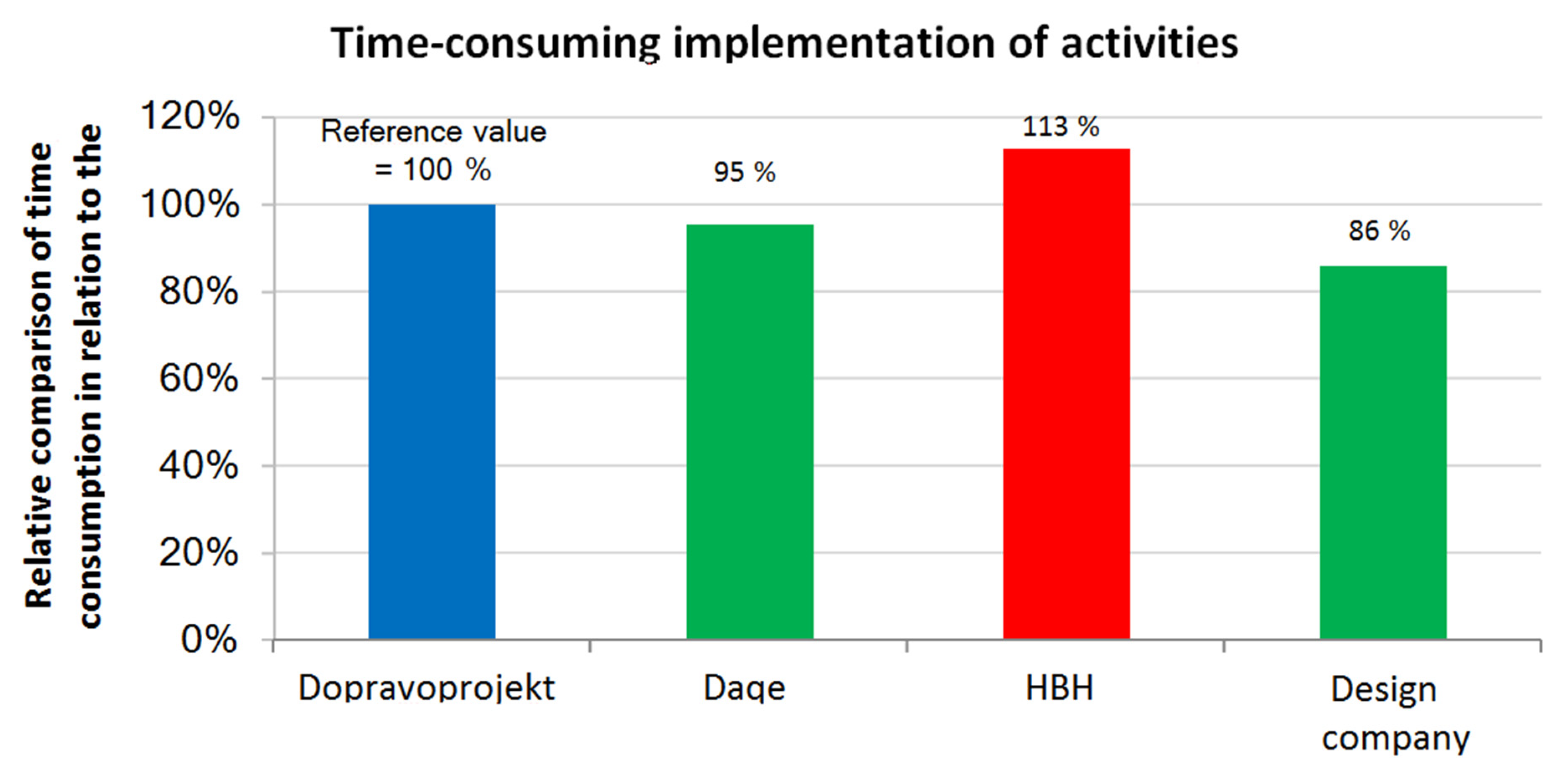Towards the Efficiency of Infrastructure Building in the Slovak Republic—Methodological Apparatus of Change Management
Abstract
1. Introduction
2. Literature Review
2.1. Change Management—Origin and Types
2.2. Change Management—Approaches and Tools
2.3. Assessment of Infrastructure Projects
2.4. Background
3. Methodology
3.1. Recognition of Potential Change in the Project
3.2. Initiation of a Potential Change Procedure
3.3. Defining the Nature and Extent of Potential Change
3.4. Forced/Initiated Change
3.5. Justification of the Rationale for the Potential Change and Determination of Its Impacts on the Project
3.6. Impacts on Finance
3.7. Impacts on the Schedule
3.8. Procedural Impacts
3.9. Technical–Technological Impacts
3.10. Request for Initiation of Change Procedure
3.11. Submission of the Proposal for Change by the Construction Supervisor and Its Examination by the Investor
3.12. Negotiation Between the Parties in the Change Procedure Aimed at Selecting the Optimal Variant
3.13. Rejection/Approval of the Change Procedure
4. Conclusions and Discussion
4.1. Practical Application of Methodological Apparatus
4.2. Future Research Directions
Author Contributions
Funding
Institutional Review Board Statement
Informed Consent Statement
Data Availability Statement
Conflicts of Interest
References
- Winch, G.M. Managing Construction Projects, 2nd ed.; Wiley-Blackwell: Hoboken, NJ, USA, 2009; Available online: https://books.google.sk/books?hl=sk&lr=&id=z8bwas7GGEkC&oi=fnd&pg=PR13&dq=Managing+construction+projects&ots=49j-UbYsjc&sig=hZNNrP13WqAayeZqypNnSZwlzRM&redir_esc=y#v=onepage&q&f=false (accessed on 10 November 2022).
- Schoonwinkel, S.; Fourie, C.J.; Conradie, P.D.F. A risk and cost management analysis for changes during the construction phase of a project. J. S. Afr. Inst. Civ. Eng. 2016, 58, 21–28. [Google Scholar] [CrossRef][Green Version]
- Zhao, Z.Y.; Lv, Q.L.; Zuo, J.; Zillante, G. Prediction System for Change Management in Construction Project. J. Constr. Eng. Manag. 2010, 136, 659–669. [Google Scholar] [CrossRef]
- Halou, M.I.K.; Samin, R.; Ahmad, M. Impacts of change management on risk and cost management of a construction projects. J. Proj. Manag. 2019, 4, 157–164. [Google Scholar] [CrossRef]
- Bueno, P.C.; Vassallo, J.M.; Cheung, K. Sustainability Assessment of Transport Infrastructure Projects: A Review of Existing Tools and Methods. Transp. Rev. 2015, 35, 622–649. [Google Scholar] [CrossRef]
- Najvyšší Kontrolný úrad SR, Stratégia Rozvoja Dopravy v SR so Zameraním na Dopravnú Infraštruktúru. 2022. Available online: https://www.nrsr.sk/web/Dynamic/DocumentPreview.aspx?DocID=526617 (accessed on 10 November 2022).
- Wang, R.; Samarasinghe, D.A.S.; Skelton, L.; Rotimi, J.O.B. A Study of Design Change Management for Infrastructure Development Projects in New Zealand. Buildings 2022, 12, 1486. [Google Scholar] [CrossRef]
- Bitamba, B.F.; An, S. Construction Project Change Management in the Democratic Republic of the Congo: Status, Causes, and Impacts. Sustainability 2020, 12, 9766. [Google Scholar] [CrossRef]
- Sun, M.; Fleming, A.; Senaratne, S.; Motawa, I.; Yeoh, M.L. A Change Management Toolkit for Construction Projects. Archit. Eng. Des. Manag. 2006, 2, 261–271. [Google Scholar] [CrossRef]
- Ibbs, C.W.; Wong, C.K.; Kwak, Y.H. Project Change Management System. J. Manag. Eng. 2001, 17, 159–165. [Google Scholar] [CrossRef]
- Chen, C.-S.; Tsui, Y.-K.; Dzeng, R.-J.; Wang, W.-C. Application of project-based change Management in construction: A case study. J. Civ. Eng. Manag. 2015, 21, 107–118. [Google Scholar] [CrossRef]
- Motawa, I. A Systematic Approach to Modelling Change Processes in Construction Projects. Constr. Econ. Build. 2005, 5, 23–31. [Google Scholar] [CrossRef]
- Andersson, M.; Berglund, M.; Flodén, J.; Persson, C.; Waidringer, J. A method for measuring and valuing transport time variability in logistics and cost benefit analysis. Res. Transp. Econ. 2017, 66, 59–69. [Google Scholar] [CrossRef]
- Salling, K.B.; Leleur, S. Accounting for the inaccuracies in demand forecasts and construction cost estimations in transport project evaluation. Transp. Policy 2015, 38, 8–18. [Google Scholar] [CrossRef]
- Vagdatli, T.; Petroutsatou, K. Modelling Approaches of Life Cycle Cost–Benefit Analysis of Road Infrastructure: A Critical Review and Future Directions. Buildings 2022, 13, 94. [Google Scholar] [CrossRef]
- Rosik, P.; Wójcik, J. Transport Infrastructure and Regional Development: A Survey of Literature on Wider Economic and Spatial Impacts. Sustainability 2022, 15, 548. [Google Scholar] [CrossRef]
- Hensher, D.A.; Truong, T.P.; Mulley, C.; Ellison, R. Assessing the wider economy impacts of transport infrastructure investment with an illustrative application to the North-West Rail Link project in Sydney, Australia. J. Transp. Geogr. 2012, 24, 292–305. [Google Scholar] [CrossRef]
- Ministerstvo Dopravy a Výstavby Slovenskej Republiky, Metodická Príručka k Zostave Dopravných Modelov a Dopravných Prognóz. 2019. Available online: https://www.mindop.sk/ministerstvo-1/doprava-3/dopravne-modelovanie (accessed on 1 August 2021).
- Kartam, N.A. Making Effective Use of Construction Lessons Learned in Project Life Cycle. J. Constr. Eng. Manag. 1996, 122, 14–21. [Google Scholar] [CrossRef]



| Dopravoprojekt | HBH Projekt | DAQE Slovakia | ‘Design Company’ | |
|---|---|---|---|---|
| Item | [EUR] | |||
| Price excl. VAT | 459,308.00 | 517,672.00 | 438,330.00 | 394,349.00 |
| VAT | 91,861.60 | 103,534.40 | 87,666.00 | 78,869.80 |
| Price incl. VAT | 551,169.60 | 621,206.40 | 525,996.00 | 473,218.80 |
Disclaimer/Publisher’s Note: The statements, opinions and data contained in all publications are solely those of the individual author(s) and contributor(s) and not of MDPI and/or the editor(s). MDPI and/or the editor(s) disclaim responsibility for any injury to people or property resulting from any ideas, methods, instructions or products referred to in the content. |
© 2025 by the authors. Licensee MDPI, Basel, Switzerland. This article is an open access article distributed under the terms and conditions of the Creative Commons Attribution (CC BY) license (https://creativecommons.org/licenses/by/4.0/).
Share and Cite
Volner, Ľ.; Čamaj, J.; Palková, A. Towards the Efficiency of Infrastructure Building in the Slovak Republic—Methodological Apparatus of Change Management. Sustainability 2025, 17, 2423. https://doi.org/10.3390/su17062423
Volner Ľ, Čamaj J, Palková A. Towards the Efficiency of Infrastructure Building in the Slovak Republic—Methodological Apparatus of Change Management. Sustainability. 2025; 17(6):2423. https://doi.org/10.3390/su17062423
Chicago/Turabian StyleVolner, Ľubomír, Juraj Čamaj, and Adriána Palková. 2025. "Towards the Efficiency of Infrastructure Building in the Slovak Republic—Methodological Apparatus of Change Management" Sustainability 17, no. 6: 2423. https://doi.org/10.3390/su17062423
APA StyleVolner, Ľ., Čamaj, J., & Palková, A. (2025). Towards the Efficiency of Infrastructure Building in the Slovak Republic—Methodological Apparatus of Change Management. Sustainability, 17(6), 2423. https://doi.org/10.3390/su17062423






